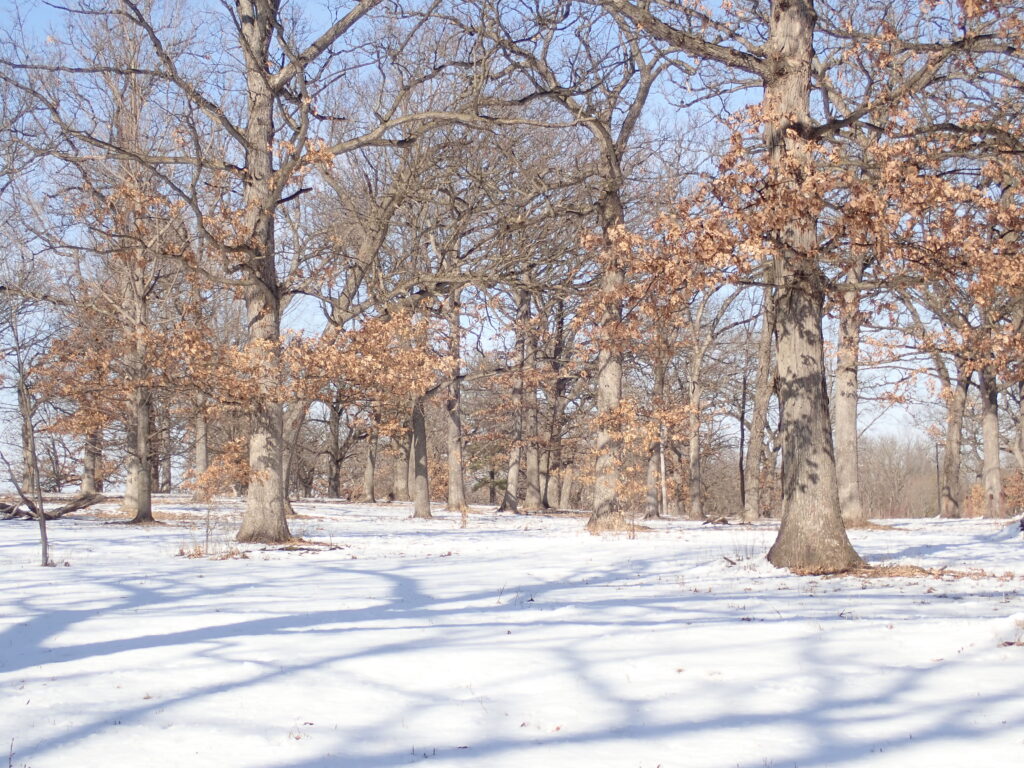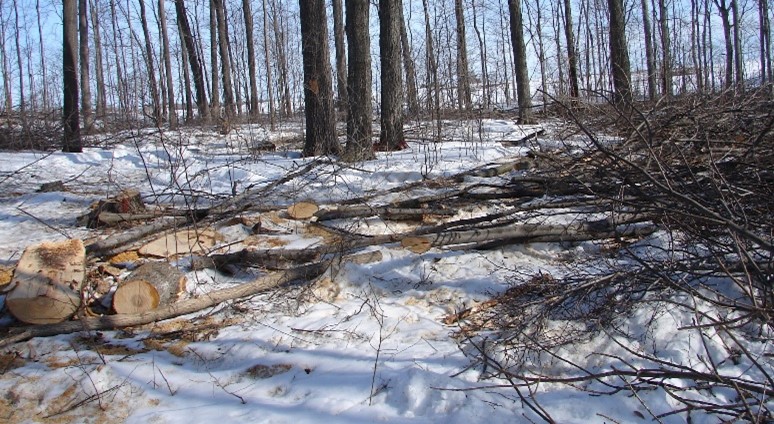By Kyoko Scanlon, DNR Forest Pathologist, Kyoko.Scanlon@wisconsin.gov or 608-235-7532

The colder weather in spring 2023 might delay the DNR’s recommendations to avoid trimming or cutting from April through July. Photo: Wisconsin DNR
It’s April, but in much of Wisconsin the weather doesn’t seem to have gotten the message.
You may be wondering if the oak harvesting restriction that started on April 1 (south of the tension zone) and will start on April 15 (north of the tension zone) might be pushed back due to unusually cold temperatures.
Even with unusually cold springs, we remain consistent with the same general messages: “Stop pruning in April” and “Avoid harvesting in April (south of the tension zone).” We do this for the following reasons:
- It is difficult to spread the word in a timely manner about when to begin the restrictions. Often when spring comes late, it arrives suddenly; in those cases, before we know it, we’ve entered the high-risk period.
- We want to be consistent in stressing the messages of the existing oak harvesting guidelines, so that the public is aware of them.
That said, the oak harvesting guidelines allow flexibility at the stand level when the landowner/property manager and other affected parties (foresters, loggers, etc.) all agree on modifications based on local information (temperature data, etc.). “Unusual weather patterns in early spring” is listed as one of the modifications in the oak harvesting guidelines.
There is an online interface tool that provides users with oak wilt pruning/harvesting recommendations based on the emergence status of the two most important insects that transmit oak wilt in Wisconsin. The tool uses a Growing Degree Day model constructed from insect trapping data (Jagemann et al., 2018) to provide guidance to reduce the risk of oak wilt introduction at the beginning of the high-risk period. Consult your regional Forest Health Specialist to get help interpreting results.

When harvesting oak, people are reminded to treat stumps no later than 24 hours after cutting to prevent the spread of oak wilt. Photo: Wisconsin DNR
Because this site provides information based on actual weather data, it is useful to refine the beginning of the period when pruning, wounding and/or harvesting of oaks should be avoided.
When experiencing an unusually cold spring, the landowner/property manager and affected parties should agree on how long to extend harvesting based on the weather situation, comfort with risks involved and relative importance of completing the harvest. When harvesting deadlines are extended, it is important to be aware that stumps are susceptible to oak wilt for up to 72 hours after cutting.
Like any modification, the justification for using the “unusual weather patterns in early spring” modification needs to be documented in the cutting notice/report form. This is Form 2460-001 (Timber Sale Notice and Cutting Report) for public lands and Form 2450-032 (Cutting Notice and Report of Wood Products from Forest Crop and Managed Forest Lands) for Managed Forest Law lands. Guidelines for the forms can be found here.
For example, add a sentence to the comments box saying: “After discussion with the regional forest health specialist and the property manager, the harvesting deadline was extended by one week using Modification 3 in Chapter 3 of the oak harvesting guidelines.”
If you have regional or site-specific questions on this issue, please contact your regional Forest Health Specialist.
